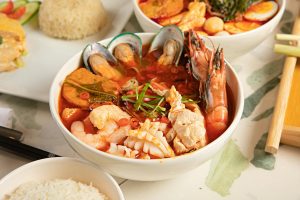How Soups and Stews Reflect Cultural Storytelling
Food has always been at the core of human life. It not only provides nourishment to our bodies but also serves as a way to connect with others and share our stories. Different cultures around the world have their own unique way of preparing and enjoying meals, with each dish carrying its own history and significance. Amongst the countless dishes that exist, soups and stews stand out for their ability to reflect cultural storytelling. These hearty and comforting dishes not only satisfy our hunger but also provide a glimpse into the rich heritage and traditions of different societies. So, let’s delve deeper into how soups and stews reflect cultural storytelling.
The evolution of soups and stews
Soups and stews have been a part of human diet since ancient times. The origins of these dishes can be traced back to the earliest civilizations, where people used large pots or cauldrons to cook meat, vegetables, and grains together. As culinary practices evolved, so did soups and stews. Each region and culture added their own unique ingredients and preparation methods, giving rise to a vast variety of soups and stews that are enjoyed today.
The role of soups and stews in cultural storytelling
Cultural significance
Soups and stews hold immense cultural significance as they are often passed down from one generation to the next. These dishes are deeply rooted in cultural traditions and are prepared following traditional recipes. They serve as a way to preserve cultural heritage and keep the stories and memories of ancestors alive. In some cultures, certain soups and stews are reserved for special occasions or festivals, making them a meaningful part of the cultural celebrations.
Ingredients and preparation methods
The ingredients and preparation methods used for soups and stews also reflect cultural storytelling. Local and seasonal ingredients are often used, which not only showcase the regional produce but also highlight the traditional farming practices of a particular culture. For example, the popular African peanut soup is a reflection of the agricultural practices of West Africa, where peanuts are a staple crop.
Moreover, the method of making soups and stews also reflects cultural traditions. For instance, the French onion soup is prepared by slowly caramelizing onions, which is a technique used in French cuisine for centuries. This adds a depth of flavor to the soup and also represents the patience and attention to detail that is essential in French cooking.
Stories behind the dishes
Soups and stews are also accompanied by interesting stories and legends that have been passed down through generations. These stories often revolve around the origin of the dish or its cultural significance. For example, the story behind the Vietnamese pho soup tells of how a hungry peasant stumbled upon a pot of simmering beef bones and transformed it into a mouthwatering dish that is now a staple in Vietnamese cuisine.
Unifying communities
Soups and stews not only represent individual cultures but also have the power to bring people together. In many cultures, soups and stews are shared during communal gatherings such as weddings, funerals, and other important events. This serves as a way to bond and strengthen relationships within the community. Moreover, the act of sharing a meal is considered a symbol of love and hospitality, which is a universal value shared by all cultures.
Conclusion
In conclusion, soups and stews are more than just delicious dishes to satisfy our hunger. They are a reflection of cultural storytelling, passed down from one generation to the next. From the selection of ingredients to the preparation methods and the stories behind the dishes, soups and stews showcase the diverse cultures and traditions of the world. So, the next time you sit down to enjoy a warm bowl of soup or stew, remember that you are not just indulging in a meal, but also experiencing a cultural story.










